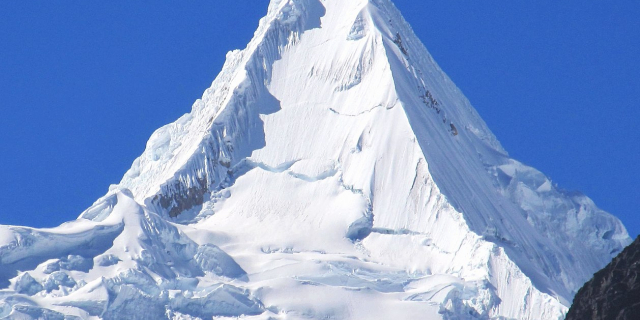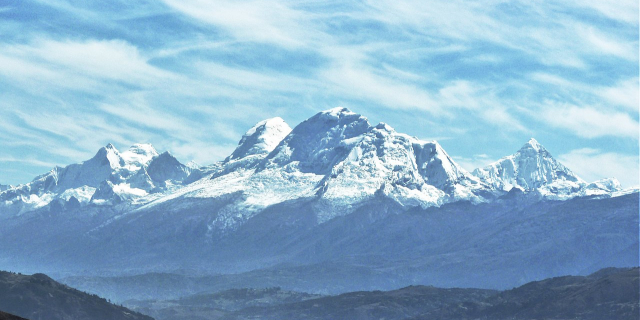Chan Chan (Spanish pronunciation: [tʃaɲ.'tʃaŋ]) was the largest city of the pre-Columbian era in South America. It is now an archeological site in the department of La Libertad five kilometers (3.1 mi) west of Trujillo, Peru.
Chan Chan is located in the mouth of the Moche Valley and was the capital of the historical empire of the Chimor from 900 to 1470, when they were defeated and incorporated into the Inca Empire. Chimor, a conquest state, developed from the Chimú culture which established itself along the Peruvian coast around 900 CE.
Chan Chan is in a particularly arid section of the coastal desert of northern Peru. Due to the lack of rain in this area, the major source of nonsalted water for Chan Chan is in the form of rivers carrying surface runoff from the Andes. This runoff allows for control of land and water through irriga...Read more
Chan Chan (Spanish pronunciation: [tʃaɲ.'tʃaŋ]) was the largest city of the pre-Columbian era in South America. It is now an archeological site in the department of La Libertad five kilometers (3.1 mi) west of Trujillo, Peru.
Chan Chan is located in the mouth of the Moche Valley and was the capital of the historical empire of the Chimor from 900 to 1470, when they were defeated and incorporated into the Inca Empire. Chimor, a conquest state, developed from the Chimú culture which established itself along the Peruvian coast around 900 CE.
Chan Chan is in a particularly arid section of the coastal desert of northern Peru. Due to the lack of rain in this area, the major source of nonsalted water for Chan Chan is in the form of rivers carrying surface runoff from the Andes. This runoff allows for control of land and water through irrigation systems.
The city of Chan Chan spanned 20 square kilometers (7.7 sq mi) and had a dense urban center of six square kilometers (2.3 sq mi) which contained extravagant ciudadelas. Ciudadelas were large architectural masterpieces which housed plazas, storerooms, and burial platforms for the royals. The splendor of these ciudadelas suggests their association with the royal class. Housing for the lower classes of Chan Chan's hierarchical society are known as small, irregular agglutinated rooms (SIARs). Because the lower classes were often artisans whose role in the empire was to produce crafts, many of these SIARs were used as workshops.
Chan Chan is believed to have been constructed around 850 AD by the Chimú.[1] It was the Chimor empire capital city with an estimated population of 40,000–60,000 people.[2]
After the Inca conquered the Chimú around 1470 AD, Chan Chan fell into decline.[2] the Incas used a system called the "Mitma system of ethnic dispersion" which separated the chimú civilians into places already recently conquered by the Inca. A little over 60 years later in 1535 AD, Francisco Pizarro founded the Spanish city of Trujillo which pushed Chan Chan further into the shadows.[2] While no longer a teeming capital city, Chan Chan was still well known for its great riches and was consequently looted by the Spaniards.[2] An indication of the great Chimú wealth is seen in a sixteenth-century list of items looted from a burial tomb in Chan Chan; a treasure equivalent to 80,000 pesos of gold was recovered (nearly $5,000,000 US dollars in gold).[2]
In 1969, Michael Moseley and Carol J. Mackey began excavations of Chan Chan; today these excavations continue under the Peruvian Instituto Nacional de Cultura.[1]
Conservation planIn 1998, The "Master Plan for Conservation and Management of the Chan Chan Archeological Complex" was drawn up by the Freedom National Culture Institute of Peru with contributions from the World Heritage Foundation – WHR, ICCROM, and GCI. The plan was approved by the Peruvian Government.[3] Methods of conservation include reinforcement and stabilization of structures of main buildings and around the Tschudi Palace, using a blend of traditional and modern engineering techniques.[4] Chan Chan currently has 46 points of critical damage, though the site's total damage far exceeds these points. The regional government of La Libertad is funding conservation efforts at these points.
UNESCO World Heritage Site Infrastructure is in place to protect the ruins in the Chan Chan Archaelogical Zone.
Infrastructure is in place to protect the ruins in the Chan Chan Archaelogical Zone.On 28 November 1986, UNESCO designated Chan Chan as a World Heritage Site,[5] and placed it on the List of World Heritage in Danger. The World Heritage Committee's initial recommendations included taking the appropriate measures for conservation, restoration, and management; halting any excavation that did not have accompanying conservation measures; and mitigation of plundering. A Pan-American Course on the Conservation and Management of Earthen Architectural and Archaeological Heritage was funded by many institutes coming together, including ICCROM, the Getty Conservation Institute, and the Government of Peru.[4] Archeologists have been trying to protect this city in many ways. They are trying to create rain coverings over the buildings to protect them from the rain and save the adobe buildings that are deteriorating. They have also been trying to create new drainage systems to drain the rainwater faster.[6] Chan Chan has been on the world heritage danger list since 1986. since 2000 they have implemented safety measures that include documentation of everything, public management, and an emergency and disaster plan.[7]






























Add new comment